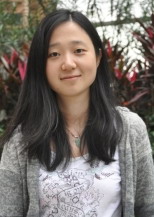香港中文大学Ni Zhao教授学术报告,题为Solution-Processed Semiconductors: From Fundamentals to Device Applications。
时间:3月18日 (Friday) 4:00 pm, Room 939。
Abstract
Over the past two decades, there has been tremendous progress in discovering new solution processed semiconductors for applications such as LEDs, solar cells, transistors and sensors. Unlike conventional crystalline semiconductors, solution-processed materials are compatible with low-cost, large-area roll-to-roll processing, needing lower energy intensity for device fabrication; at the same time, solvent engineering of the materials enables tunability over their electronic and optical properties. In this talk, I will discuss the design and characterizations of optoelectronic and bioelectronic devices based on solution-processed semiconductors. I will start with introducing the optical spectroscopic tools we developed for in-situ material and device characterizations. Using photodetectors and solar cells as examples, I will then talk about the unique structure-property correlations in solution-processed semiconductors and how these correlations can be utilized to achieve tunable device performances. Lastly, I will describe the applications of our devices in energy, environmental, and biomedical sciences.
Over the past two decades, there has been tremendous progress in discovering new solution processed semiconductors for applications such as LEDs, solar cells, transistors and sensors. Unlike conventional crystalline semiconductors, solution-processed materials are compatible with low-cost, large-area roll-to-roll processing, needing lower energy intensity for device fabrication; at the same time, solvent engineering of the materials enables tunability over their electronic and optical properties. In this talk, I will discuss the design and characterizations of optoelectronic and bioelectronic devices based on solution-processed semiconductors. I will start with introducing the optical spectroscopic tools we developed for in-situ material and device characterizations. Using photodetectors and solar cells as examples, I will then talk about the unique structure-property correlations in solution-processed semiconductors and how these correlations can be utilized to achieve tunable device performances. Lastly, I will describe the applications of our devices in energy, environmental, and biomedical sciences.
Biography:

Ni Zhao received her doctoral degree in Physics from the University of Cambridge in 2008. From 2008-2010 she worked as a postdoctoral research fellow at the Massachusetts Institute of Technology (MIT). Her work at MIT involved developing novel hybrid solar cell structures that incorporate colloidal quantum dots with organic and inorganic materials as well as fundamental studies on the electronic processes in nanocrystalline films. Prior to MIT she worked in the Optoelectronic Group at the Cavendish Laboratory in Cambridge, UK. Her PhD dissertation was focused on device physics of polymer based field-effect transistors, charge transport mechanism at organic semiconductor/ dielectric interface and nanoscale patterning using inkjet-printing techniques. During her M.S Degree, Zhao worked in the Xerox Research Center of Canada on novel semiconducting polymers and their applications in field-effect transistors.
Ni Zhao joined the Department of Electronic Engineering at the Chinese University of Hong Kong (CUHK) in December 2010.
zhao ni.jpg
